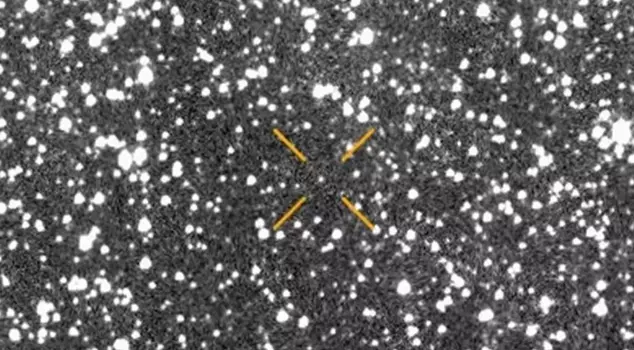
04.09.2025 19:06
An interstellar visitor has entered the Solar System once again. The comet 3I/ATLAS is being studied through the joint observations of four major space telescopes: TESS, James Webb, Hubble, and SPHEREx. Its early activation, extraordinary carbon dioxide levels, and massive gas cloud make it noteworthy, and as it approaches Earth, it could fundamentally change our understanding of interstellar objects.
```html
Discovered in mid-2025 and understood to have an interstellar origin, the celestial object named 3I/ATLAS has drawn the attention of astronomers with its extraordinary features. This comet, which carries the title of the third interstellar visitor to reach the Solar System, is being observed simultaneously by four of the world's most advanced telescopes: Hubble, the James Webb Space Telescope (JWST), SPHEREx, and the Transiting Exoplanet Survey Satellite (TESS). The findings obtained are quite striking.
SWITCHED TO EARLY WAKE-UP
Everything began with the official identification of 3I/ATLAS on July 1, 2025. However, TESS data examined retrospectively from this date showed that the first traces of the object were reached in May. Moreover, at that time, it was located 6 astronomical units (AU) away, beyond Jupiter's orbit.
While it is generally known that comets begin to activate around 5 AU, it has been understood that 3I/ATLAS passed this threshold much earlier. Scientists believe that this early activity may be related to its interstellar origin.
CARBON DIOXIDE-RICH ATMOSPHERE
The early activity detected by TESS was also confirmed by JWST and SPHEREx in August. Spectroscopic analyses revealed that the object contains an extraordinary level of carbon dioxide. Detailed measurements from JWST showed that the ratio of carbon dioxide to water vapor in the comet's atmosphere is at a level of 8:1. This ratio has been recorded as one of the highest carbon dioxide densities ever observed in any comet.
CONTAINS A HIGH AMOUNT OF VOLATILES
According to measurements made by the Hubble Space Telescope, the core of 3I/ATLAS is approximately 2.8 kilometers in diameter. SPHEREx detected a gas and dust cloud around the object that is about 23 kilometers wide. The size of this cloud indicates that the object contains a high amount of volatiles. Researchers believe that this unusual chemical composition may be related to the interstellar environment in which the object formed; or that the structure of the ices in the core differs from those in the Solar System.
WILL APPROACH THE SUN FIRST, THEN EARTH
3I/ATLAS is expected to reach its closest position to the Sun on October 29, 2025. However, during this transition, it will be behind the Sun from Earth's perspective, so observations will be limited. Nevertheless, the possibility of spacecraft in Mars orbit capturing data at this critical moment is eagerly awaited by the scientific community.
The most striking phase will begin after the solar passage. The object's trajectory is expected to bring it to its closest point to Earth, after which it is thought to leave the Solar System. Interestingly, it is calculated that in March 2026, 3I/ATLAS may come into close contact with the Juno spacecraft in Jupiter's orbit. This possible encounter is seen as a significant opportunity for detailed analysis of the object.
NEW QUESTIONS, NEW POSSIBILITIES
The unusual structure, early activity, and chemical differences of 3I/ATLAS raise new questions for scientists about the nature of interstellar objects. These types of celestial bodies, which have been observed very few times so far, may also hold clues about how planetary systems outside the Solar System formed. All observation teams are trying to make the most efficient use of this short but critical time window to uncover the secrets of this extraordinary visitor.
```